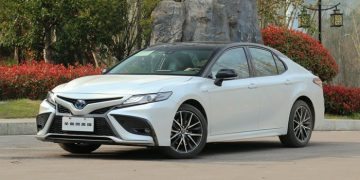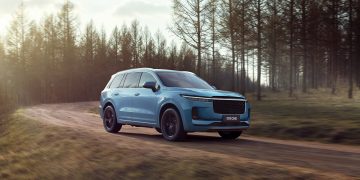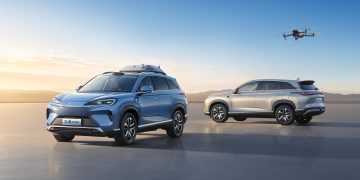Introduction: The EV Transition for Traditional Manufacturers
The automotive industry is in the midst of a significant transformation, driven by the increasing adoption of electric vehicles (EVs). This shift is largely propelled by global efforts to reduce carbon emissions, decrease dependence on fossil fuels, and address the environmental and public health issues associated with internal combustion engine (ICE) vehicles. As governments impose stricter emissions regulations and consumers demand greener options, traditional car manufacturers, who have long relied on ICE vehicles, are now facing unprecedented challenges as they transition to electric vehicle production.
This transition is no simple task. For legacy automakers, the shift to electric vehicles involves not only technological and manufacturing changes but also significant shifts in business models, supply chains, and workforce capabilities. Traditional manufacturers must navigate a complex array of challenges, including supply chain disruptions, skill gaps, regulatory compliance, and consumer demand. This article will delve into these challenges and explore how traditional automakers are responding to the electric vehicle revolution.
The Technological Shift: From Combustion Engines to Electric Drivetrains
One of the most immediate challenges faced by traditional car manufacturers when transitioning to EV production is the technological shift from internal combustion engines (ICE) to electric powertrains. The differences in design, engineering, and manufacturing processes between traditional vehicles and electric vehicles are profound, requiring automakers to rethink their entire vehicle production approach.
1. Design and Engineering Challenges
The design and engineering of electric vehicles are fundamentally different from those of internal combustion engine vehicles. While ICE vehicles rely on engines, transmissions, and exhaust systems, electric vehicles operate on electric motors, batteries, and power control systems. This shift requires automakers to not only redesign their existing platforms but also to develop entirely new powertrains, battery management systems, and associated technologies.
For example, electric vehicles require high-capacity battery packs that are both compact and lightweight to optimize driving range and performance. Automakers must invest in research and development to design battery systems that are efficient, durable, and cost-effective. This has led to the development of new engineering and manufacturing techniques to integrate these components seamlessly into vehicle platforms.
2. Battery Production and Supply Chain Issues
One of the most significant technological challenges in the transition to EVs is securing a reliable supply of high-performance batteries. Lithium-ion batteries, which are the standard for most electric vehicles, require rare and expensive raw materials such as lithium, cobalt, nickel, and graphite. The demand for these materials has surged as more automakers invest in EV production, but the supply of these materials is constrained, leading to price volatility and potential supply chain disruptions.
Traditional car manufacturers are now grappling with how to secure a consistent and sustainable supply of these materials, especially as countries look to tighten regulations around mining practices. Additionally, some manufacturers are looking to build their own battery factories or form strategic alliances with battery manufacturers to ensure access to a steady supply of batteries.
For example, Volkswagen has invested heavily in developing its own battery production capabilities through its partnership with Northvolt, a Swedish battery manufacturer. Similarly, Ford has invested billions into creating a battery production plant in the U.S. to reduce its dependence on external suppliers.
Supply Chain Issues: Securing Components and Materials for EVs
The shift to electric vehicles is not just about changing the vehicles themselves; it also requires a complete overhaul of the supply chain. Traditional car manufacturers depend on a vast network of suppliers for the production of internal combustion engine vehicles, but the supply chain for electric vehicles is quite different.
1. Raw Materials and Sourcing
As mentioned earlier, electric vehicle production requires new materials that are not typically used in traditional vehicle manufacturing. Lithium, cobalt, and nickel are essential for producing the batteries that power electric vehicles, but sourcing these materials is not without its challenges. Many of these materials are concentrated in certain parts of the world, such as the Democratic Republic of Congo (cobalt) and Australia (lithium), which can create geopolitical risks and supply chain disruptions.
In addition, the extraction of these materials often involves environmental concerns and human rights issues. For example, cobalt mining in the DRC has been linked to child labor and poor working conditions. Automakers are under increasing pressure to ensure that their supply chains are sustainable and ethical. This has led to a rise in initiatives focused on responsible sourcing, recycling, and developing alternative materials to reduce dependence on these critical resources.

2. Changing Component Suppliers
Electric vehicles rely on components that are distinct from those in ICE vehicles. Instead of engines, transmissions, and exhaust systems, EVs require components such as electric motors, power inverters, and specialized cooling systems for the battery packs. This shift in components means that traditional suppliers who have built their businesses around ICE vehicles need to pivot and develop new capabilities.
Suppliers who previously manufactured internal combustion engine components are now faced with the challenge of retooling their operations to produce EV-specific parts. This requires significant investment in new technologies, training, and research and development. For example, traditional suppliers like Bosch and Magna are investing heavily in electric powertrains and battery systems to remain competitive in the evolving EV market.
Skill Gaps: Building a Workforce for the Electric Future
Another significant challenge faced by traditional car manufacturers is the skill gap within their workforce. The shift to electric vehicles demands a new set of skills, particularly in areas such as battery technology, electric drivetrains, and software development. Engineers and technicians who have spent their careers working on internal combustion engines must now acquire new knowledge and expertise to work on electric vehicles.
1. Training and Re-skilling Employees
To bridge this skills gap, automakers must invest in training and re-skilling their employees. Many companies are setting up training programs and collaborating with technical schools and universities to develop the next generation of skilled workers. This is particularly important as electric vehicles involve advanced technologies such as battery management systems, power electronics, and autonomous driving systems.
Companies like General Motors and Ford have launched extensive re-skilling programs for their workforce, ensuring that employees are equipped to handle the demands of electric vehicle production. Furthermore, automakers are increasingly focusing on software development, which is integral to the operation of modern electric vehicles, particularly those with advanced features such as autonomous driving and over-the-air updates.
2. Attracting Talent from Other Industries
In addition to retraining existing employees, automakers are also seeking to attract new talent from other industries, particularly the tech sector. As electric vehicles become more reliant on software, AI, and data analytics, car manufacturers need to bring in software engineers, data scientists, and cybersecurity experts to build and maintain the complex systems required for EVs.
This has led to increased competition for skilled talent between the automotive and technology sectors, making it more difficult for traditional manufacturers to attract the best and brightest minds. To address this, many companies are offering competitive salaries, benefits, and opportunities for career development.
Regulatory Compliance: Navigating the Complex Web of EV Legislation
Regulatory compliance is another major hurdle for traditional automakers as they transition to electric vehicle production. Governments around the world are imposing stricter emissions regulations and offering incentives to encourage the adoption of EVs, but navigating the complex and evolving regulatory landscape is a significant challenge for automakers.
1. Emissions Standards and Carbon Regulations
In many regions, governments are tightening emissions standards for internal combustion engine vehicles and offering incentives for electric vehicle adoption. For example, the European Union has set ambitious targets for reducing CO2 emissions, with plans to reduce emissions by 55% by 2030 and achieve net-zero emissions by 2050. These regulations are driving automakers to produce more electric vehicles to meet these stringent targets.
Similarly, countries like China, the United States, and Canada are introducing their own regulations that mandate the production of a certain percentage of electric vehicles as part of broader carbon reduction goals. These regulations create a sense of urgency for traditional manufacturers to shift their production lines to electric vehicles.
2. Subsidies, Incentives, and Tax Breaks
In addition to regulatory pressure, governments are offering subsidies, tax breaks, and incentives to encourage consumers to purchase electric vehicles. For example, the U.S. government offers a federal tax credit for electric vehicle buyers, while countries like Norway and the Netherlands offer substantial incentives for EV adoption. However, these incentives are often subject to changing political climates, making it difficult for automakers to predict the long-term financial viability of their electric vehicle programs.
Furthermore, automakers must navigate the regulatory landscape to ensure that their EV production meets safety, environmental, and manufacturing standards, which can vary by region. This adds an additional layer of complexity to the transition process.
Conclusion: Overcoming the Challenges of EV Production
The shift to electric vehicle production is undoubtedly one of the most significant challenges that traditional car manufacturers have faced in recent decades. From technological shifts to supply chain disruptions, skill gaps, and regulatory compliance, the road to EV production is fraught with obstacles. However, automakers are responding to these challenges with innovation, investment, and strategic partnerships. By embracing new technologies, upskilling their workforce, and adapting their supply chains, traditional car manufacturers can position themselves for success in the electric vehicle market.
Ultimately, the challenges faced by traditional manufacturers are part of a larger global effort to transition to a more sustainable and environmentally friendly transportation system. As the automotive industry continues to evolve, the ability to adapt to the electric vehicle revolution will determine the future success of both legacy automakers and new entrants.











































